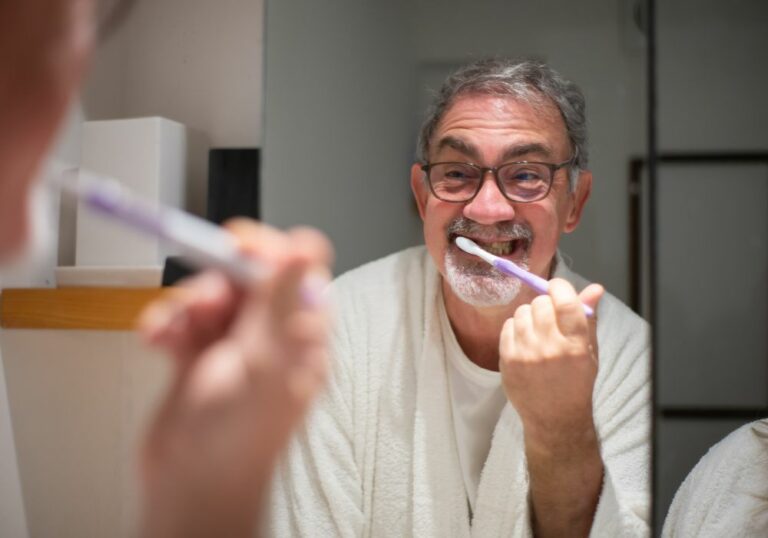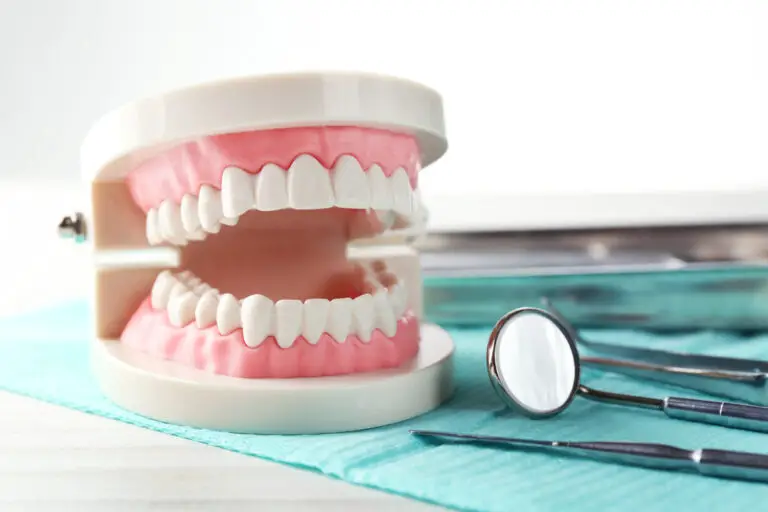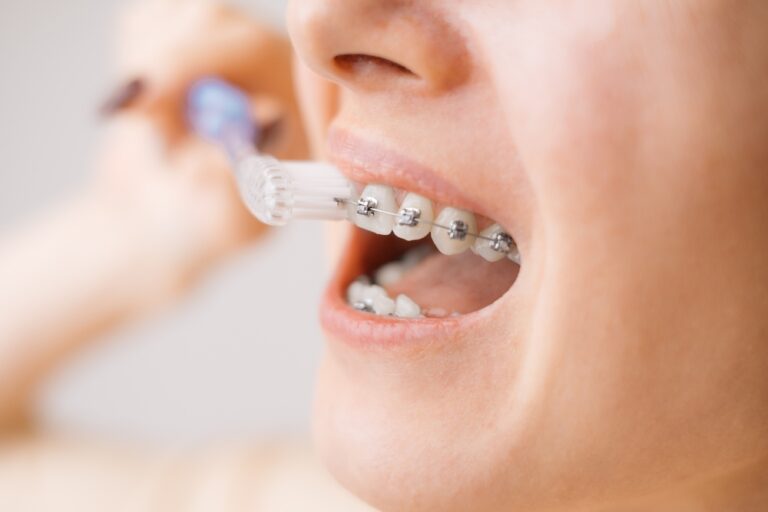Teeth naturally tend to shift over time due to changes in the mouth, oral habits, or dental work. Minor tooth movement often corrects itself, but significant shifting requires orthodontic treatment to return teeth to their proper positions.
What causes teeth shifting?
Many factors can cause tooth migration or changes in alignment:
Tongue thrusting
If you constantly push your tongue against your teeth when swallowing or speaking, the prolonged pressure can displace teeth. This habit is most common in childhood but may continue unconsciously into adulthood. The upper front teeth are particularly susceptible.
Thumb or finger sucking
Sucking on a digit long past the normal age range applies force on the upper incisors and can alter their angle or rotation. Most children stop sucking habits around age 4-5. Beyond this age, it is more likely to affect dental alignment.
Missing teeth
When a tooth is extracted or lost due to decay or trauma, adjacent and opposing teeth can drift or tilt into the open space. This change in position tends to worsen over time. Molars play an important role in stabilization, so their loss often leads to shifting.
Gum disease
Chronic gum inflammation and gingival recession affect the bone and supporting structures around teeth. This loss of support enables teeth to move more freely. The resulting increased mobility allows teeth to shift when chewing or biting.
Aging
Maturation takes a toll on the integrity of the bite. As you age, changes like bone loss, loss of connective tissue, and wearing of the teeth themselves reduce stability. Low-grade gradual shifting is common as we get older.
Orthodontic relapse
After orthodontic treatment with braces or clear aligners, teeth have a tendency to return to their former crooked/crowded positions. This occurs if proper retention protocols are not followed consistently.
Bruxism
Habitual grinding or clenching puts considerable chewing forces on the teeth. This constant pressure can displace teeth over time. Stress and sleep disorders often contribute to bruxism.
Other causes
Abnormal swallowing or tongue postures, such as “tongue thrusting”, can also influence tooth positions. Diseases affecting tooth support structures like gums and bone can enable teeth migration as well.
Can mildly shifted teeth recover position?
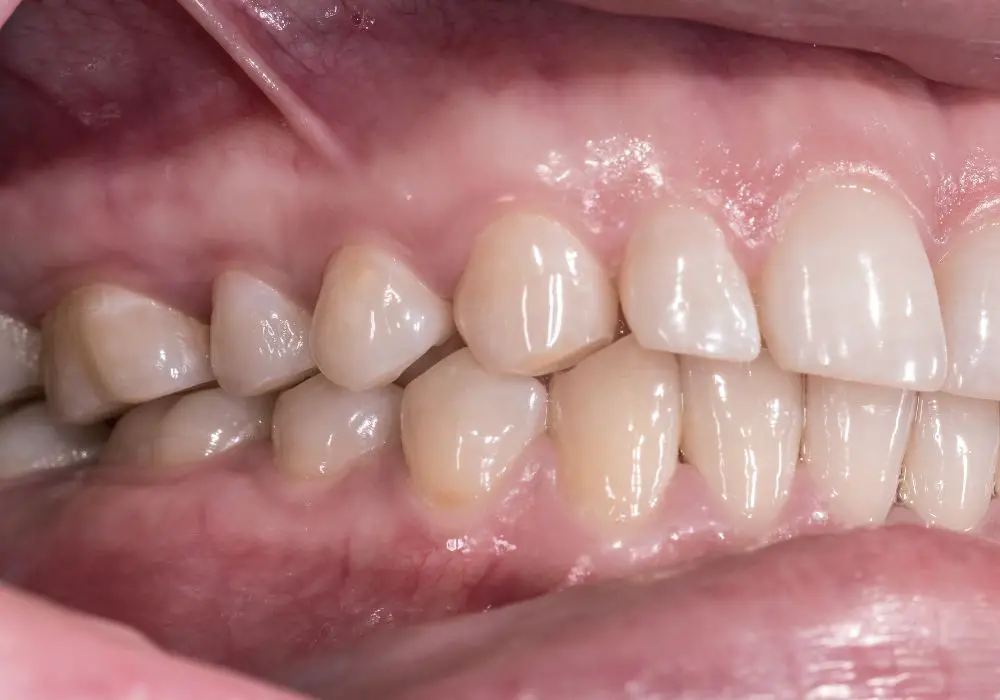
If teeth have only moved slightly out of alignment, they may be able to drift back into normal position on their own under ideal conditions. However, this depends on several factors:
- Amount of displacement – The more minor the shift, the better chance teeth have of passively realigning. Significant movement requires intervention.
- Direction – Teeth pushed outward have a better outlook than those rotated internally or pushed into the tongue space.
- Tooth type – Incisors and canines are more likely to realign spontaneously than posterior teeth.
- Open spaces – Teeth may regain lost position if adjacent spaces are available. Crowding severely reduces this prospect.
- Root length – Longer roots provide more stability to withstand chewing forces. Shorter roots allow easier tipping.
- Age – Younger patients have greater potential for minor corrections as they still have bone growth and dental development on their side.
- Habits – Eliminating tongue thrusting and other harmful oral habits can encourage teeth to right themselves.
While waiting to see if minor shifts resolve, using a stabilizing dental appliance may help guide teeth back into better alignment. Otherwise orthodontic intervention will be required for optimal correction.
Treatments to move teeth back into position
If your teeth have shifted out of their normal arrangement substantially, orthodontic treatments can move them back where they belong:
Traditional braces
Braces apply gentle constant pressure to teeth over an extended duration, allowing them to adjust into alignment. Treatment involves bonding fixed brackets to each tooth connected by a wire adjusted at periodic visits. Average treatment is 1-3 years.
Clear aligners
Popular clear aligner systems like Invisalign are removable plastic trays that incrementally move teeth position. New aligners are worn every 1-2 weeks to gradually shift teeth into place. Treatment usually ranges 6-24 months. Aligners are less noticeable than braces.
Fixed retainers
A thin wire can be permanently bonded to the tongue-side of front teeth to prevent shifting after braces treatment. Some patients have lower fixed retainers placed for long-term stability. They are lessremovable retainers.
Tooth extraction
In some situations, extracting overcrowded or protruding teeth provides space for remaining teeth to drift into straightened positions. Extractions may precede use of braces.
Dental restoration
Restorations like dental implants, bridges, partial dentures, or crowns can replace missing teeth or stabilize weakened teeth in their ideal positions. Restoring integrity of the bite enables teeth alignment.
Orthodontic surgery
For serious bite misalignments that cannot be fully corrected with orthodontics alone, jaw surgeries like LeFort osteotomies or BSSO can reposition the jaws to enable improved teeth fitting. This is a last resort option for severe cases.
Maintaining corrected tooth alignment
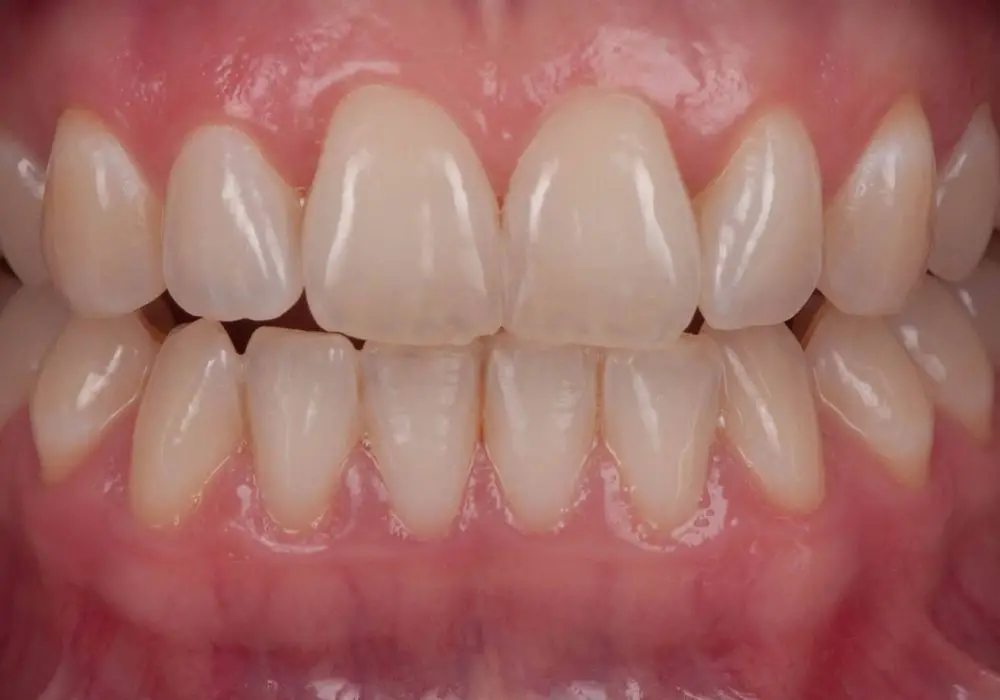
After orthodontic treatment has established ideal tooth positioning, retention and preventive measures are key for preserving that alignment long-term:
- Wear retainers as prescribed, usually nightly at first before tapering off gradually. Retainer compliance is crucial for stability.
- Visit your orthodontist periodically for retention checks to ensure teeth are holding position. Most will recommend annual or biannual monitoring.
- Avoid tongue thrusting, nail biting, chewing on ice/pens/hard foods, and other habits that can dysregulate teeth position.
- Use a mouthguard during contact sports or other activities that risk trauma to the face and dental alignment.
- Go for regular professional cleanings and dental exams to detect potential problems early.
- Follow home care like brushing, flossing, and fluoride use to maintain healthy gums and enamel.
Key Takeaways
- Mild tooth shifting may resolve on its own, but moderate-severe movement requires orthodontic correction.
- Braces, clear aligners, fixed retainers, extractions, and dental restorations can move teeth back into alignment.
- Consistent retainer wear, avoiding harmful oral habits, and regular dental visits help sustain straightened teeth.
Frequently Asked Questions
How long does it take for shifted teeth to move back?
Mild shifts may improve naturally over several months. More significant movement can take 1-3 years with orthodontic treatment. Attempting to realign teeth without braces is slower and less predictable.
Can teeth be straightened again without braces?
Minor alignment issues may improve with retainers alone, but moderate-severe tooth shifting typically requires braces or clear aligners again for full correction. Natural realignment becomes less likely as we age.
Do teeth stay straight after second round of braces?
Teeth can remain properly aligned long-term after a second course of orthodontic treatment if proper retention protocols are followed – wearing retainers as directed, avoiding harmful habits, lifelong dental checkups. Compliance with these is key.
Can I fix a shifted bite without surgery?
In some cases yes – mild to moderate bite issues can be corrected nonsurgically with orthodontic treatment like braces or aligners. But severely misaligned bites usually require corrective jaw surgery for full realignment.
Is it normal for teeth to shift in your 30s?
Low-level gradual shifting is common in adulthood due to aging factors like bone loss, weaker fibers between teeth, tooth wear, and changed oral pressures. More noticeable changes in your 30s warrant an orthodontic evaluation.



